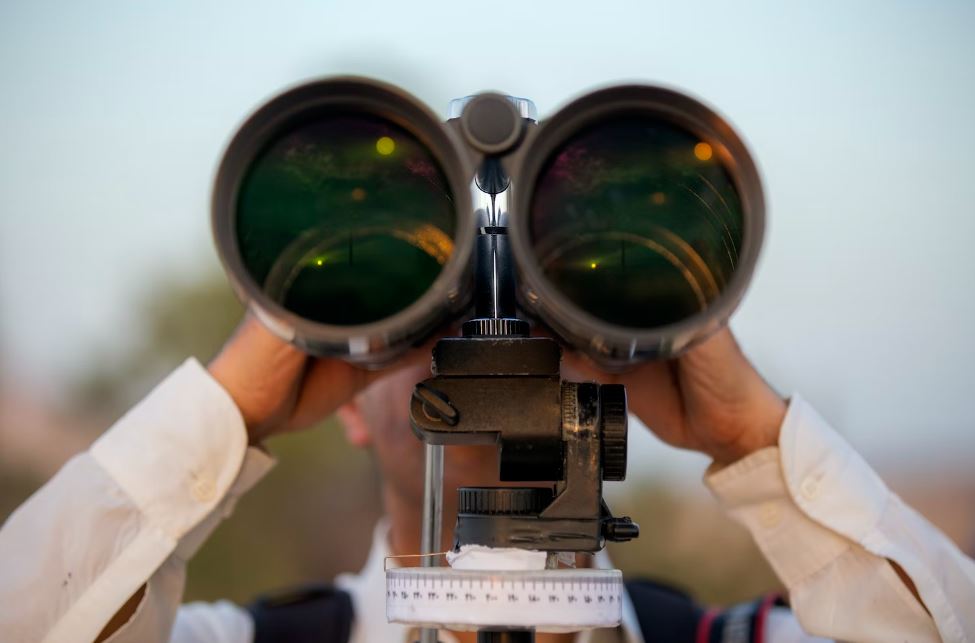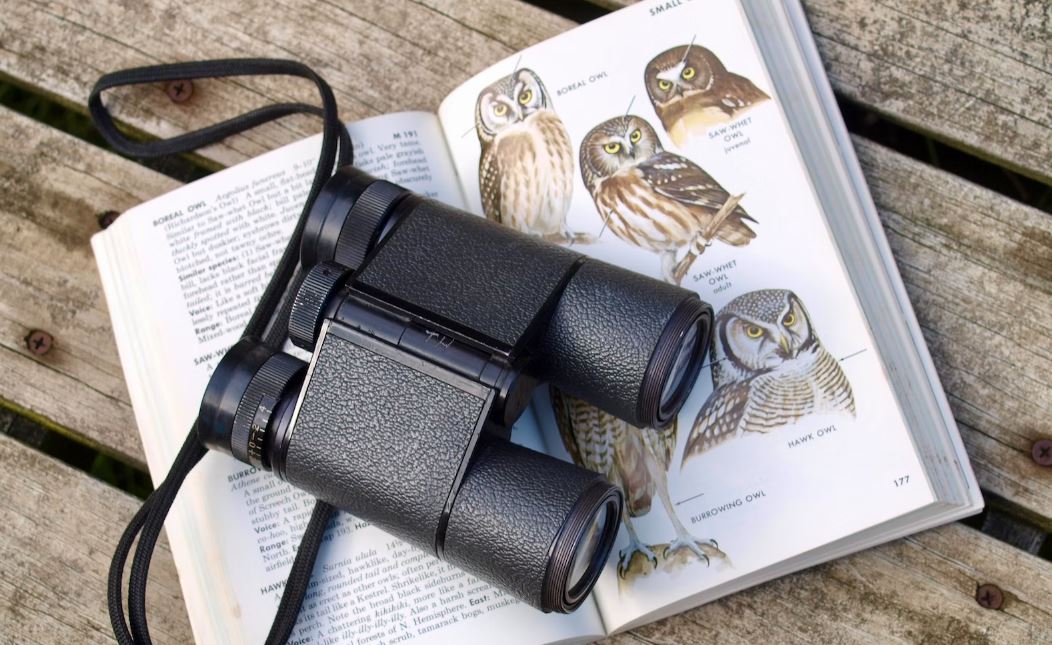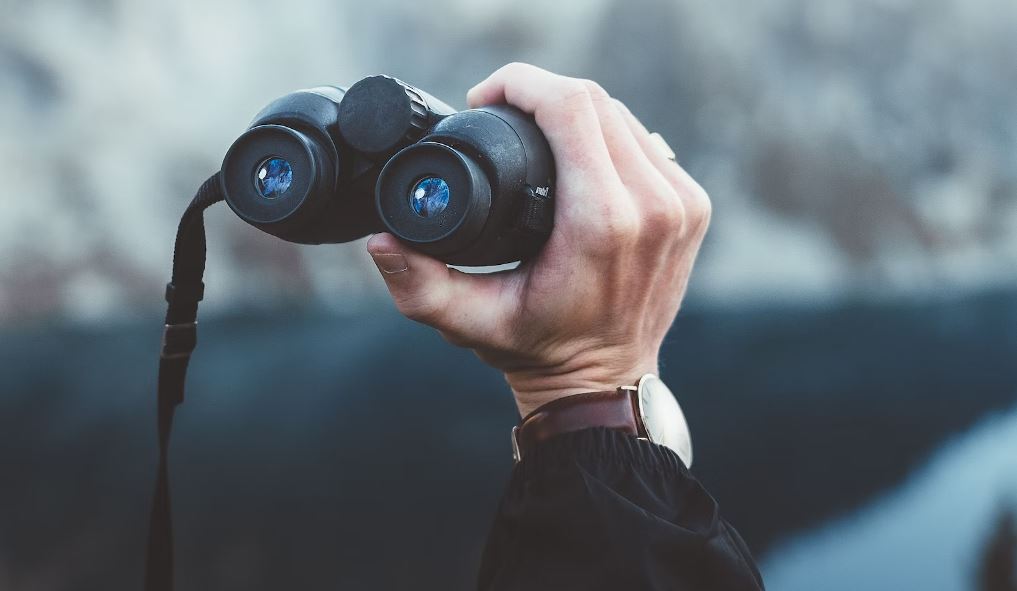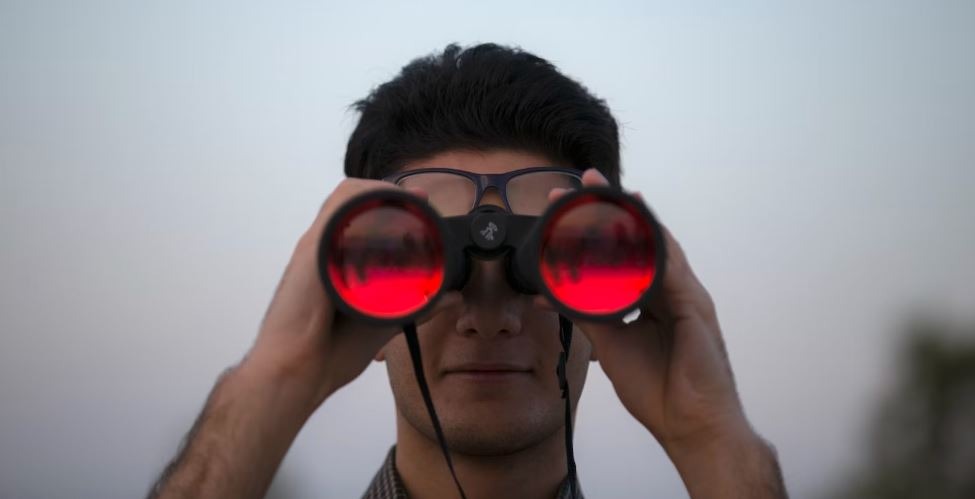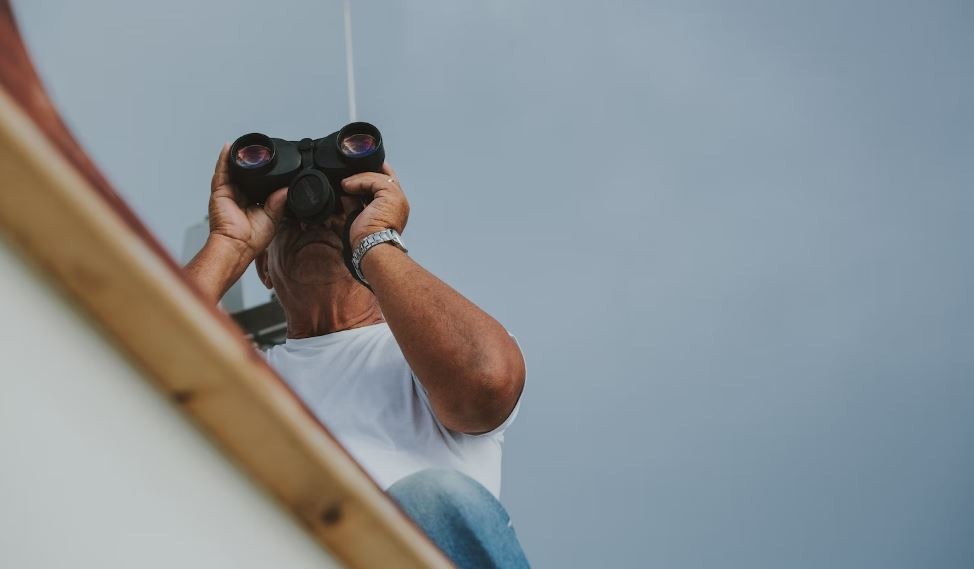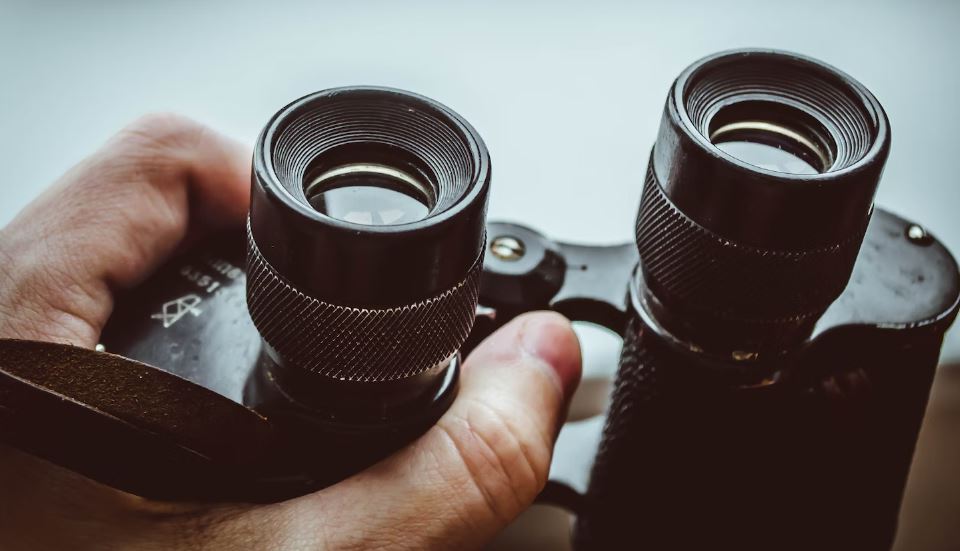Binoculars are a common piece of equipment in the hands of hobbyists because they provide a distinct and immersive viewing experience. They are made up of two miniature telescopes mounted side by side and allow users to look at distant objects with both eyes at the same time. They provide a three-dimensional perspective of the world, which improves depth perception and makes them ideal for activities such as birdwatching, stargazing, wildlife observation, and sporting events. Because they are portable and simple to use, they can be used by a wide range of people to participate in the hobby. Binoculars come in a variety of sizes and weights to accommodate a wide range of preferences and needs.
Binoculars have a wide field of view, allowing hobbyists to quickly and easily scan large areas, making them useful for activities such as nature exploration and landscape appreciation. They are available in a variety of magnification levels and objective lens sizes, allowing users to select the best combination for their specific interests and needs.
Binoculars are built for long-term use, with ergonomic grips, adjustable eyecups, and sometimes image stabilization technology for steady viewing. These optical instruments are adaptable, serving multiple functions in a variety of hobbies and outdoor activities, enriching the overall experience for enthusiasts of all ages.
Concept of ED and HD Glass in Binoculars
The terms “ED glass” and “HD glass” refer to innovative optical technologies that have significantly improved the quality of image reproduction in the world of binoculars. These technologies have been given the acronyms “ED” and “HD glass.” These developments have been incorporated into modern designs of binoculars to provide enthusiasts with a viewing experience that is both clearer and more detailed. When looking at faraway objects through binoculars, the result should be images that are clearer and have a greater sense of vibrancy thanks to the elimination of chromatic aberration and the improvement of color fidelity.
The quality of the image is extremely important because it has a direct bearing on our capacity to observe and appreciate the world around us when using optical devices such as binoculars. It ensures clarity, accurate color representation, reduced distortion, and overall visual comfort; as a result, our experience is enhanced, and we can see fine details even when the lighting conditions are difficult. Because a high image quality also helps the optical instrument to last for a long time, it is an excellent purchase for people who are passionate about a hobby or interest in photography.
What are ED and HD Glass?
ED glass, also known as extra-low dispersion glass, and HD glass, also known as high-definition glass, are two specialized kinds of optical glass that are used in the construction of binoculars and other optical instruments. These glass technologies aim to improve image quality by addressing issues related to chromatic aberration, which is a common optical problem in lenses. Chromatic aberration is a problem in lenses because of the way light refracts through them. A concise explanation of each is as follows:
1. ED (Extra-low Dispersion) Glass
- Chromatic aberration, also known as color fringing or color dispersion, can be reduced to a significant extent with the use of ED glass thanks to its innovative design.
- Chromatic aberration happens when different colors of light are focused at slightly different points, which results in blurred or colored fringes around objects, particularly at high magnifications. This phenomenon is especially noticeable in microscopes.
- Images that are clearer, more accurate in color, and have less chromatic aberration can be achieved with the help of ED glass’s ability to improve the convergence of light of varying wavelengths.
- In pursuits such as astronomy and birdwatching, where accurate color reproduction and clear images are of the utmost importance, binoculars constructed with ED glass are extremely desirable.
2. HD (High-Definition) Glass
- HD glass is another technology that aims to improve image quality. More specifically, it does this by lowering chromatic aberration and increasing the overall sharpness of the image.
- When referring to binoculars, the abbreviation “HD” typically denotes the utilization of high-quality glass materials and innovative lens coatings to improve both image clarity and brightness.
- Because the views provided by binoculars made with HD glass are so remarkably clear and detailed, these optics are ideally suited for a diverse range of outdoor activities, such as watching sporting events, observing wildlife, and general use.
- The branding “HD” may be different from one manufacturer to the next, but it almost always indicates an unwavering dedication to exceptional optical performance.
In conclusion, the ED glass technology and the HD glass technology are both designed to improve the image quality of binoculars. This is accomplished by lowering the amount of chromatic aberration present, as well as increasing color fidelity and image sharpness. They represent significant advancements in optical engineering, which have led to viewing experiences that are both more enjoyable and more accurate for people who are passionate about their hobbies.
How Do They Differ From Standard Glass?
The ability of ED (Extra-low Dispersion) and HD (High-Definition) glass to reduce chromatic aberration and improve overall image quality is the primary way in which these two types of glass differentiate themselves from standard optical glass. The following is how they differ from one another:
1. Chromatic Aberration Reduction
- Chromatic aberration is a phenomenon that can occur in standard optical glass. This phenomenon results in different colors of light coming into focus at slightly different points, which in turn causes color fringing and a reduction in image sharpness.
- Images that are clearer, more accurate, and have less color fringing can be achieved with the use of ED glass, which has been specifically designed to reduce the amount of chromatic aberration that occurs. This is accomplished by improving the convergence of the various wavelengths of light.
- To achieve similar benefits, such as lowering chromatic aberration and improving image clarity, high-definition (HD) glass frequently makes use of innovative coatings and components.
2. Color Fidelity
The use of ED and HD glass materials, which are designed to provide more accurate color reproduction, helps to ensure that the colors you see through the binoculars are a close match to the actual colors of the objects being observed.
Glass that is considered standard may not provide the same level of color accuracy as other types of glass, which may result in color distortion in the image that is observed.
3. Image Sharpness
The improved image sharpness that users enjoy because of the combination of ED and HD glass technologies enables them to see finer details with greater clarity.
Standard glass may produce images that are less sharp and detailed, particularly at higher magnifications. This is especially true when the magnification is increased.
4. Brightness and Contrast
ED and HD glass typically have better light transmission properties, which results in images that are brighter and have a higher contrast ratio. This effect is particularly noticeable in low-light environments.
Standard glass may cause views to be less bright and have less contrast, particularly in environments with difficult lighting conditions.
Therefore, ED glass and HD glass are distinct from regular optical glass in that they provide superior optical performance in comparison to the latter. This superior performance manifests itself in a reduction in chromatic aberration, an improvement in color fidelity, sharper images, and enhanced brightness and contrast. These cutting-edge glass technologies are becoming increasingly desirable for use in binoculars and other optical instruments because they allow users to enjoy a viewing experience that is both more satisfying and more accurate.
Benefits of ED and HD Glass in Binoculars
The use of ED (Extra-low Dispersion) and HD (High-Definition) glass in binoculars provides several significant advantages that improve the quality of the user’s viewing experience as a whole. A variety of factors contribute to the high demand for these cutting-edge glass technologies among hobbyists and people who enjoy spending time outdoors:
1. Reduced Chromatic Aberration
Chromatic aberration is a common optical issue that causes color fringing and blurriness around objects, particularly at high magnifications. ED and HD glass significantly reduces chromatic aberration, which is a problem. Because of this reduction, the images have improved sharpness and color accuracy.
2. Enhanced Color Fidelity
Users of binoculars equipped with ED and HD glass benefit from more accurate color reproduction, which enables them to observe objects in the colors that they appear in. This is of utmost significance when engaging in activities such as birdwatching, in which accurate color identification is essential.
3. Improved Image Clarity
Users of binoculars equipped with ED and HD glass benefit from more accurate color reproduction, which enables them to observe objects in the colors that they appear in. This is of utmost significance when engaging in activities such as birdwatching, in which accurate color identification is essential.
4. Better Low-Light Performance
Binoculars with ED and HD glass typically have superior light-gathering capabilities, making them an excellent choice for use in environments with low levels of available light. This is helpful for activities such as stargazing, observing wildlife at dawn and dusk, and participating in other low-light outdoor pursuits.
5. Enhanced Contrast
ED and HD glass can improve image contrast, which makes it simpler to differentiate between foreground and background elements and results in a more immersive viewing experience.
6. Reduced Color Distortion
These cutting-edge glass types significantly reduce the amount of color distortion, thereby ensuring that the observed images are as accurate to the real world as possible and do not contain any unintended color shifts.
7. Longer Eye Comfort
By reducing the amount of strain and fatigue placed on the eyes, binoculars equipped with ED and HD glass typically allow for longer periods of comfortable viewing.
8. Overall Optical Excellence
Because of their commitment to superior optical quality and performance, ED and HD glass are extremely desirable for outdoor enthusiasts and serious hobbyists who demand the best from the binoculars they use.
Improved image quality, reduced aberrations, enhanced color accuracy, improved low-light performance, and overall superior optical performance are some of the benefits that come from using ED and HD glass in binoculars. Because of these features, binoculars that have ED and HD glass are ideal for a wide variety of outdoor activities, including birdwatching, observing wildlife, stargazing, and even attending sporting events.
Binoculars with ED and HD Glass Applications
As a result of their capacity to improve one’s field of view and bring objects in the distance into clearer focus, binoculars are extremely flexible pieces of equipment that find use in a wide variety of pastimes and activities that take place outside. The following is a list of popular pastimes along with some of how binoculars can be used for them:
1. Bird Watching
Binoculars are an absolute necessity for anyone interested in birdwatching because they enable the user to observe birds in their natural habitat, identify species, and appreciate the intricate details of plumage and behavior.
2. Astronomy
Binoculars are an essential tool for anyone interested in observing the night sky. Binoculars with a large field of view make it easier to locate astronomical objects, while those with a high magnification level reveal finer details on the moon and other celestial bodies.
3. Wildlife Observation
Wildlife enthusiasts can observe animals from a safe distance and without disturbing the animals when they use binoculars. Safaris, nature walks, and wildlife photography are all excellent ways to make use of them.
4. Hiking and Nature Exploration
Hikers and people who are interested in nature often bring binoculars with them so they can observe interesting flora and fauna, such as distant mountain ranges, trees, and wildflowers. In addition to this, they heighten one’s appreciation for the beauty of natural landscapes.
5. Sports Events
At sporting events such as football, soccer, and horse racing, spectators often use binoculars to get a better view of the action and to better follow the game.
6. Boating and Marine Activities
On boats, binoculars are an absolute necessity for navigation, locating landmarks, and observing marine life such as whales and dolphins.
7. Concerts and Theater
When sitting in the back rows of a theater or concert venue, binoculars are a great tool to have to improve one’s view of the performers and the stage.
8. Hunting
Binoculars are an invaluable tool for hunters, allowing them to spot game animals from a greater distance and aiding in both target identification and tracking.
9. Scenic Photography
When scouting for interesting subjects or locations for their photographs, photographers frequently carry binoculars with them. This is especially common in landscape and wildlife photography.
10. Camping and Backpacking
Whether you’re going camping or backpacking, having binoculars can make it easier to explore your surroundings, find wildlife, and get a better view of landmarks in the distance.
11. Airshows and Aviation Enthusiasm
Binoculars are an essential tool for aviation fans who want to keep track of planes in the air or identify aircraft they spot in the sky.
12. Amateur Nature Study
When it comes to observing plants, insects, and other small creatures in greater detail, binoculars are an extremely helpful tool for amateur naturalists and researchers.
Binoculars have a wide range of applications across a variety of hobbies and outdoor activities. They make the experience more enjoyable as a whole by providing a closer and more detailed view of the world that we live in. When selecting a pair of binoculars, one should take into account the particular requirements and preferences of the activity or hobby in question.
Choosing the Right Type of ED and HD Glass for Your Binoculars
It is essential to make sure that you get the best possible optical performance from your binoculars by selecting the appropriate type of ED (Extra-low Dispersion) and HD (High-Definition) glass. This takes into account your requirements and preferences. The following factors should be taken into account to assist you in making a well-informed choice:
1. Understand Your Needs
Determine the primary objective for which you intend to use your binoculars. Are you using them for something specific, like birdwatching, stargazing, or the observation of other forms of wildlife?
Take into consideration the lighting conditions that you will be using them in, as certain types of glass may function more effectively in dim light.
2. Research the Manufacturer
ED and HD glass may be produced by a variety of manufacturers, each with its own set of trade names and technologies. Do some research on the manufacturer’s specifications, as well as their reputation for producing quality optical products.
3. Compare Glass Types
Try to find a pair of binoculars that clearly label the type of ED or HD glass that they employ. Some manufacturers may offer additional information regarding the specific glass elements and coatings that are used in their products.
Analyze how various types of glass perform in terms of their performance characteristics, such as their ability to reduce chromatic aberration, improve color fidelity, and enhance image clarity.
4. Consider the Cost
ED and HD glass typically come at a premium price due to their superior level of quality. Establish a spending limit for yourself, and then search for a pair of binoculars that strikes a good balance between low cost and high optical performance.
5. Magnification and Objective Lens Size
The image quality of your binoculars will also be affected by their magnification and the size of their objective lenses. Make sure they are appropriate for the use you have in mind for them and that the quality of the glass elements they complement is maintained.
6. Field Testing
Test the binoculars as much as possible under conditions that are as close to real life as possible. This allows you to evaluate how well they perform in the context of your particular use case and environment.
7. Read Reviews
Find reviews of the binocular models you’re thinking about buying, both from users and experts. Experiences gained in the real world can provide extremely helpful insights into optical performance.
8. Warranty and Support
Take into consideration the customer support and warranty offered by the manufacturer. Peace of mind and assurance of the product’s quality are two benefits that can be derived from a solid warranty.
9. Personal Preference
Finally, put your faith in your perceptions and preferences. Something that strikes the fancy of one individual might not do the same for another. Pick a pair of binoculars that offer an optical experience that you find to be the most enjoyable.
When looking for the ideal combination of ED and HD glass for your binoculars, it is important to first identify your needs, then investigate the manufacturer as well as the various glass technologies available, consider the price, and conduct field tests whenever possible. In the end, the choice you make should complement your particular pastime or activity, as well as one that provides image quality and optical performance that lives up to your expectations.
Tips for Maximizing the Benefits of ED and HD Glass in Your Binoculars
The following advice should be kept in mind if you want to get the most out of the ED (Extra-low Dispersion) and HD (High-Definition) glass that is contained in your binoculars and have an exceptional time using them:
1. Keep Your Optics Clean
Utilizing either a lens cleaning kit or a microfiber cloth, give the lenses and prisms of your binoculars a thorough cleaning regularly. The image quality may suffer if there is dust or smudges on it.
2. Use Lens Caps and Covers
Protect your binocular lenses with the covers and caps provided when they are not in use. This protects the glass surfaces from being scratched, dirty, or damaged by moisture.
3. Adjust the Eyecups
Adjust the eyecups so that they are in the right place for your eyes. This not only ensures that you have adequate eye relief, but it also makes the most of the available field of view.
4. Proper Diopter Adjustment
Make the necessary adjustments to the diopter settings so they correspond to your eyesight. You can precisely adjust the focus for each eye using the diopter adjustment, which results in clear images.
5. Steady Viewing
For extended periods of viewing, particularly if you are using binoculars with a high magnification, you should make use of a tripod or monopod. This results in a more stable image as well as a reduction in hand tremors.
6. Optimize Lighting Conditions
Make sure that the binoculars you choose are appropriate for the level of light that will be present. If you intend to do any stargazing or birdwatching at dawn or dusk, you should give some thought to investing in ED or HD glass because it may perform exceptionally well in low light.
7. Practice Proper Focusing
Learn some effective methods of concentration. Adjust the focus wheel slowly and carefully until the image is clear. To achieve pinpoint accuracy of focus, pay close attention to the tiniest of details.
8. Experiment with Eyepiece Settings
Some pairs of binoculars have eyepieces that can be adjusted to accommodate a variety of users. Try out different combinations of these options to see what gives you the most pleasurable and immersive experience for your eyes.
9. Use Lens Coatings Wisely
Advanced lens coatings are included on many ED and HD binoculars these days. Learn about the different coatings that are used and how to make the most of them for your circumstances, such as using anti-reflective coatings to cut down on glare.
10. Regular Maintenance
Check the vehicle at regular intervals for any signs of wear, misalignment, or loose parts. It is possible to get more use out of your binoculars and keep their optical performance in top shape with regular maintenance.
11. Learn About Your Binoculars
Spend some time reading the user manual so you can become familiar with all the functions and settings available on your binoculars. Having this information will allow you to maximize their potential and use it to your advantage.
12. Practice and Patience
Your ability to get the most out of your binoculars will increase over time as you gain experience using them and acquire new skills. Getting the most out of ED and HD glass requires practice, but the more you use them, the better you’ll get at it.
By adhering to these guidelines and performing routine maintenance on your binoculars, you can make certain that you make the most of the cutting-edge ED and HD glass technology and that you have a high-quality viewing experience while participating in the activities of your choice.
Conclusion
In conclusion, the combination of ED (Extra-low Dispersion) and HD (High-Definition) glass in binoculars is a big step forward in optical technology that offers many benefits to people who use them for a wide range of hobbies and activities outside. With these advanced glass technologies, chromatic aberration is reduced, colors are more true, images are clearer, and the viewing experience is better.
Binoculars with ED and HD glass let hobbyists and people who love nature see the world with more detail, clarity, and accuracy than ever before. Whether you like to watch birds, look at the stars, observe wildlife, or just enjoy being outside, these binoculars will help you see and appreciate the beauty of nature in ways you never thought possible before.
By knowing your specific needs, choosing binoculars with the right type of glass for your activities, and following proper maintenance and use tips, you can get the most out of the ED and HD glass in your binoculars. This will give you years of great optical performance and enjoyment in your chosen activities.
